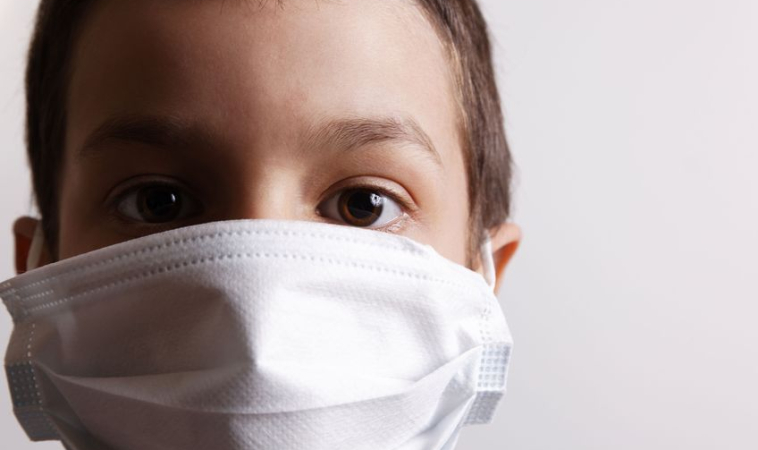The word “fever” is taken from the Latin word favere which means “to warm”. In adults, the normal body temperature is considered to be 98.6 F (37C), with young children being slightly higher. While the onset of a fever may be frightening both to the parents as well as the child, it is not caused by a breakdown of the body’s temperature-regulating mechanism such as seen with heat stroke or exhaustion. Rather, it is the body’s normal self-preserving mechanism of “hyper-functional repair”. In other words, a fever is a normally occurring body process that destroys the infecting agent or toxemia and repairs the damage done by these agents. It acts to preserve the status quo of the healthy body.
Why do Fevers Occur?
Fever may occur for a variety of reasons. It is most often a response to a bacterial or viral infection that has occurred because of the body having a lowered resistance. But fever may also occur when toxic wastes have accumulated in the body, the increased temperature serving to neutralize and eliminate the toxemia. In response to the offending agent’s influence, an elevated temperature acts to increase resistance to disease and restore the body to health. Fever has been shown in research to elevate the white blood cell count. White blood cells act to bind toxic materials and engulf microorganisms, aiding in their removal from the body. In addition there occurs an elevation in the heart and respiration rates which act to spread oxygenated blood to the site of infection. Microorganisms do not tolerate high oxygen environments well and are less likely to multiply. In addition, the body’s metabolic rate increases, causing elimination of toxic wastes from the infection site. While enhancing these normal body mechanisms to fight disease, fever also acts to lessen microbe growth. Most microorganisms that cause harm to the body are only able to live within a narrow temperature range. A higher temperature destroys these organisms by restricting their growth and allowing the white blood cells to get the upper hand.
In the holistic view, an elevated body temperature is the organism’s way of correcting an imbalance between its own “vital force” and the external environment. Viruses and bacteria prevalent in the air, soil and water around us cause infections when an individuals “vital force” is no longer able to oppose it. When we are in good health, exposure to these infective agents can occur without the person getting sick. This is why some people get a “flu bug” that is going around while others are unaffected.
It is important in therapy to support a fever, allowing it to do its work by eliminating the infective agent or toxin and building the immune system. If not allowed to complete its natural progression, the body will become progressively weaker and unable to mount the reactive power to overcome the disease. Repeatedly administering agents that block the ability to mount a fever is seen as counter productive as they circumvent normal healing mechanisms and change set point margins making it harder for the person to respond the next time.
Guidelines for Fevers
Fever is seen as a welcome companion to any disease process as it signifies that the body is attempting to eliminate the disease and toxic influences upon it. The process of mounting a fever and getting through it quickly, can be enhanced by following a few simple guidelines.
1) Rest – decrease all unnecessary activity, take the day off from work or keep the child home from school. Take the time to keep warm and read a good book, or if your body tells you, sleep.
2) Increase fluids – drink at least 6-8, eight ounce glasses of water a day for an adult and slightly less for a child. If you feel the need for more, then do so. Decrease all foods, taking only soups and broths for nourishment.
3) Medicines – take only those that enhance fevers and sweating. Teas such as Yarrow, Chamomille or Cat Nip enhance this mechanism and also help to calm the person. Other immune stimulating herbs or homeopathic medicines are excellent for this process, and may be used along with hydrotherapy which enhance their action.
4) Monitor the temperature frequently – especially in a child. Rectal temperatures run 0.5 °F above oral temperatures and those taken under the arm will be 0.5-1.0 °F below the oral value. The electronic digital thermometers (battery operated), are felt to be slightly inaccurate compared to the standard mercury ones, but the ear thermometers that use infrared technology are very accurate and reliable. This should be kept in mind if the temperature starts to approach 105 °F. The skin temperature measuring strips are good only as a screening test and a more accurate measure is needed to obtain a true value.
5) Observe – for changes in behavior, levels of consciousness or onset of convulsions and dehydration. Most parents have little problem with this as “parental intuition” plays a role. Your “feelings” should be listened to as they may prevent a fever or illness from getting out of hand. Dehydration may be assessed by pinching and feeling the skin on the face and hands for turgor (does the skin bounce back to its normal position) and dryness, while observing the tongue for moisture. In newborns, retraction of the fontenells is a sign of dehydration as well. If in doubt, contact your physician.
6) Let the person know – you are there for them and that you care. This is felt to be one of the main therapeutic values of “chicken soup”. Often times this is all it takes to ally fears and anxiety, which will aid in the healing process. Fear and anxiety have been shown in studies to depress the immune system.
This is an excerpt from the Natural Medicine Pediatric Home Health Advisor
 Thomas A. Kruzel N.D. is a naturopathic physician in private practice at the Rockwood Natural Medicine Clinic in Scottsdale, Arizona. He received a BA in Biology from the California State University at Northridge, and his Doctorate of Naturopathic Medicine degree from the National College of Naturopathic Medicine. Dr. Kruzel is also a board certified Medical Technologist. He completed 2 years of Family Practice Medicine residency at the Portland Naturopathic Clinic where he was chief resident prior to entering private practice. He also completed a fellowship in Geriatric Medicine through the Oregon Geriatric Education Center and the Portland VA Medical Center.
Thomas A. Kruzel N.D. is a naturopathic physician in private practice at the Rockwood Natural Medicine Clinic in Scottsdale, Arizona. He received a BA in Biology from the California State University at Northridge, and his Doctorate of Naturopathic Medicine degree from the National College of Naturopathic Medicine. Dr. Kruzel is also a board certified Medical Technologist. He completed 2 years of Family Practice Medicine residency at the Portland Naturopathic Clinic where he was chief resident prior to entering private practice. He also completed a fellowship in Geriatric Medicine through the Oregon Geriatric Education Center and the Portland VA Medical Center.
He has been an Associate Professor of Medicine at National College of Naturopathic Medicine where he has taught Clinical Laboratory Medicine, Geriatric Medicine and Clinical Urology. He is the author of the Homeopathic Emergency Guide A Quick Reference Handbook to Effective Homeopathic Care published by North Atlantic Books and Haug Publishers Germany, and has published numerous articles in The Journal of Naturopathic Medicine as well as other publications. He also is the author of theNatural Medicine Pediatric Home Health Advisor. He has been a member of the Alternative Medicine Review Editorial Review Board since 1997 and editor of the Clinical Medicine section of the Foundations Medical Textbook. He is also the past president of the American Association of Naturopathic Physicians and was selected as Physician of the Year by the AANP in 2000 and Physician of the Year by the Arizona Naturopathic Medical Association in 2003.
















